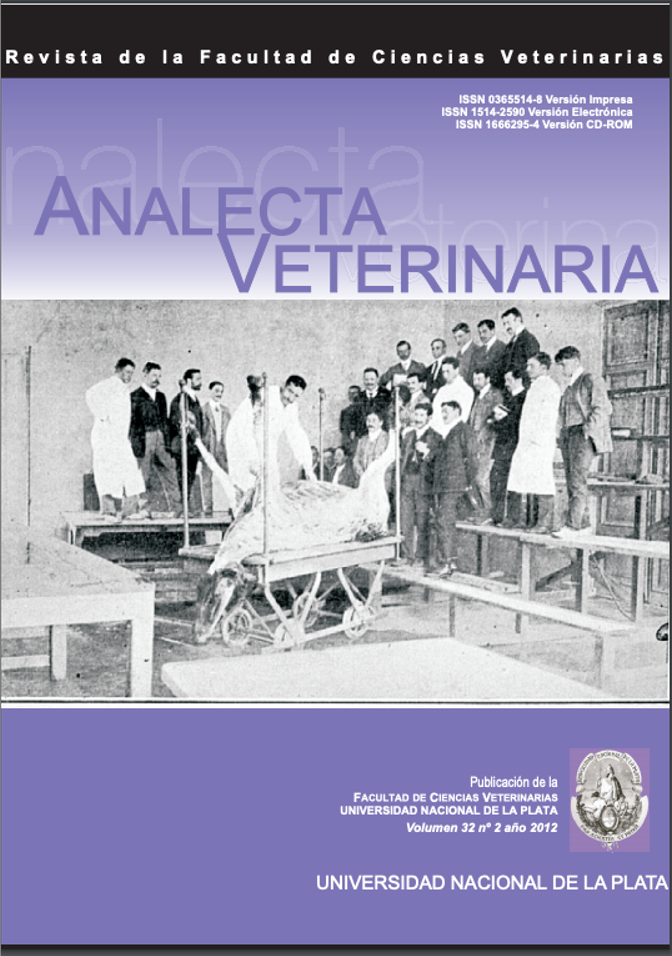Condiciones de bioseguridad y percepción del riesgo: hacia la construcción de un mapa de riesgo en la Facultad de Ciencias Veterinarias de la Universidad Nacional de La Plata
Keywords:
Mapa de riesgo, Bioseguridad, Percepción del riesgo, Instrumento metodológicoAbstract
A risk map represents the risk perception status on biosafety and safety in the workplace of a particular group. The objective of this work was to evaluate an instrument to collect information to build a risk map in the Faculty of Veterinary Sciences, National University of La Plata. An exploratory study was performed using voluntary semi-structured interviews and surveys. Participant involvement was low. 89.2% of participants were university teachers and 10.8% were technical staff members with different degrees of training. Biosafety measures use was reported by 84.8 % of the surveyed population, although 66.7 % of them considered those measures insufficient. Biosafety training was reported by 19.6 % of participants, which considered it positive, while 58.7 % indicated absence training. It is concluded that there is confusion with the definition and scope of biosafety, and risk perception is heterogeneous in the surveyed population. The voluntary nature of the study as well as its electronic distribution limited the level of participation and future studies should emphasize representative participation of technical staff.
Downloads
Metrics
References
Bourdieu P. Le sens pratique (Sentido práctico) ed. Taurus, España, 1992; p. 91-107.
Manual de Bioseguridad en el Laboratorio, 3ra edición; Organización Mundial de la Salud Ginebra Suiza, 2005. En: http://www.who.int/csr/resources/publications/biosafety/ CDS_CSR_LYO_2004_11SP. pdf; consultado el 23 de julio de 2009.
Ambrosio AM, Riera L, Calderón GE, Micucci HA. Procedimientos de seguridad en el manejo de material biológico. Acta Bioquímica Clínica Latinoamericana. 2001; (1):48-50.
OMS. Definición de factores de riesgo. http://www.who.int/topics/risk_factors/es/ fecha de consulta:24/09/2012.
Argote E, Pelegrino A. Fernández Luciano O. Rodríguez. Actualidades sobre el Análisis de riesgo biológico. Ed. Concejo Científico Veterinario de Cuba, La Habana (Cuba), 2011; p. 3-22.
Celemín JP. El estudio de la calidad de vida ambiental: definiciones conceptuales, elaboración de índices y su aplicación en la ciudad de Mar del Plata, Argentina. Rev. Hologramática. 2007; 4 (7): 71-98.
Valles MS. Técnicas cualitativas de investigación social. Reflexión metodológica y práctica profesional, Ed. Síntesis. Madrid (España), 1999; p. 177-230.
Cea D´Ancona MA. Metodología cuantitativa. Estrategias y técnicas de investigación social, Ed. Síntesis Madrid (España), 1999; p. 1-13.
Downloads
Published
How to Cite
Issue
Section
License
Authors retain the copyright and assign to the journal the right of the first publication, with the with the terms of the Creative Commons attribution license. This type of license allows other people to download the work and share it, as long as credit is granted for the authorship, but does not allow them to be changed in any way or used them commercially.

Analecta Veterinaria by School of Veterinary Sciences, National University of La Plata is distributed under a Creative Commons Attribution-NonCommercial-NoDeriv 4.0 International License.

























